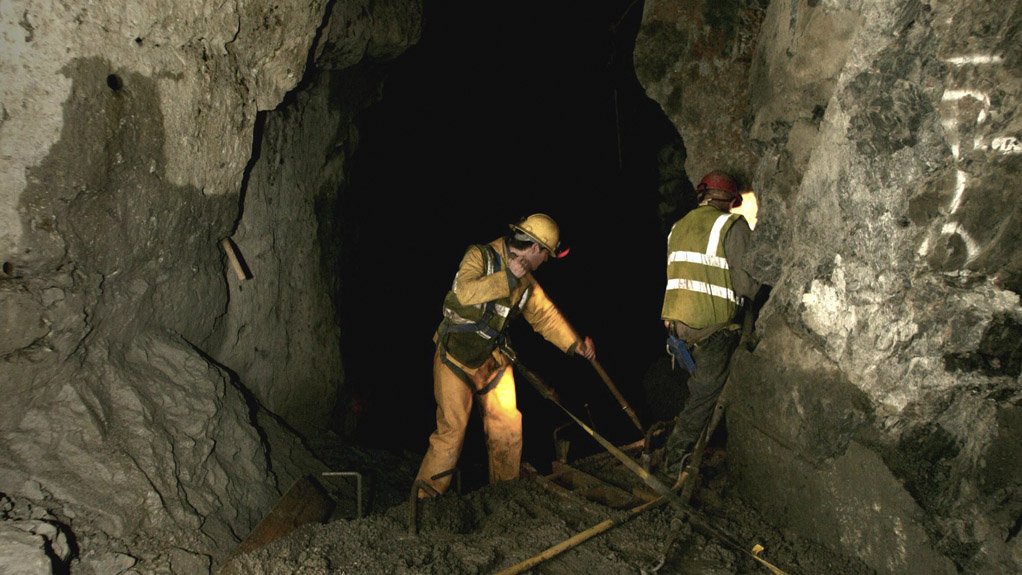Local ultralow-profile mining machinery and equipment supplier CMTI Consulting expects to release its patented MT100, MT1000 and automated brake tester technologies for mines by the end of this month.
The technologies, developed by CMTI Consulting, in Pretoria, comprise 70% local content and are described by MD Dr Danie Burger as a “world first.”
He tells Mining Weekly that ultralow-profile mining in South Africa is not at an advanced stage, noting that CMTI’s solution are “vastly different” from anything else on the market.
Consequently, Burger states, the perceptions of older miners on the implementation of mechanisation will have to change to adapt to the introduction of these technological advancements.
The research and development for the MT100, MT1000 and automated brake tester technologies spanned six years and involved the creation of new drive and control technology, as well as the introduction of a new way of thinking with regard to the drilling and development of highly sophisticated equipment requiring a new generation of trained mineworkers.
Burger says these technologies will lower stoping heights, resulting in the mining of less waste rock; increase production volumes; remove equipment operators from dangerous areas; and provide continuous mining from the surface, eliminating the need for the operator to enter the mine.
The MT100 is a battery-driven platform, equipped with a sweeper and dozer for the cleaning of production stopes, with a major application of the product being the remining of footwalls at older mining operations. The MT100 can be equipped with a multitude of work tools, such as a three-dimensional scanner and an attachment for remote charging of blast holes.
The MT1000 underground mining machine is equipped with a drill rig and mechanical breaker for nonexplosive mining or a multidrill rig for conventional stoping. The technology can drill four holes simultaneously, providing accurate and repeatable drilling to reduce costs.
The MT100 and MT1000 are both less than 800 mm high and about 1 200 mm wide, which make them suitable for mining below 1 m.
CMTI is working closely with South African gold producer Sibanye Gold to develop the MT100 and MT1000 equipment for its Burnstone mine, in Balfour, Mpumalanga. The Chamber of Mines has also started a work group to develop best mining practices using this equipment.
Burger says implementing mechanisation and automation will benefit South Africa considerably by extending the life of ageing mines beyond 2070, emphasising that the country has untapped gold and platinum reserves, as suitable mining equipment is not available.
“The aim should be for mines to operate around the clock, where equipment operators do not have to go underground. This will not only increase productivity but is also a major safety factor,” he says, emphasising the need for South Africa to implement mine mechanisation at a faster rate.
“Mine mechanisation will enable companies to mine resources that are currently not accessible, reduce lost-time injuries and increase shareholder wealth through improved production volumes,” he enthuses.
In spite of common perceptions that mechanisation will equate to job losses, Burger argues the contrary, highlighting that it does not result in job losses, but rather the need for individuals who have a different skill set.
Brake Testing Technology
The automated brake tester is particularly suitable for testing and evaluating the brakes of trackless mobile machine (TMM) equipment. “There is an industry need to test brakes using a quick, accurate and efficient method,” Burger adds.
He stresses that the TMM accounts for almost 21% of Section 54 stoppages under the Mine Health and Safety Act, with the majority of such stoppages being attributed to brake-related failures.
CMTI developed a test rig with platinum miner Anglo American Platinum(Amplats) to test and certify vehicle brakes in accordance with SANS 1589 and/or SANS 3450. This standard relates to the braking performance of trackless underground mining vehicles or surface mining equipment.
“The correct testing of the brakes of mine equipment is seriously neglected or incorrectly done. The evidence of this is the number of runaway vehicles and subsequent fatalities,” Burger emphasises.
Hybrid Loco
Mining Weekly reported in February that CMTI Consulting had been working on developing a new type of 10 t underground hybrid diesel-electric locomotive.
The locomotive features will include self-steering bogeys with regenerative breaks, alternative current permanent magnet motors developed by CMTI Consulting, a fully enclosed cab and triple-laminated windscreen, as well as infrared-assisted cameras with video displays, which have been strategically placed throughout the locomotive.
It is a fully front-driven unit, equipped with extra-heavy-duty batteries and underground railway control systems manufacturer Battery Electric’s pedestrian detection system, and can be remotely operated.
The first version of the locomotive, which was completely electrically powered, was successfully trialled for 18 months at a shaft at Sibanye’s Kloof gold mine, 60 km west of Johannesburg.
Burger says CMTI Consulting have not yet completed the hybrid diesel-electric locomotive, but notes that the company’s constant struggle with cash flow is hampering the finalising of the technology’s development.
“Cash flow is a struggle for all technology developers, but more so for small companies undertaking such high-risk developments,” he concludes.
Edited by: Tracy Hancock
Creamer Media Contributing Editor
EMAIL THIS ARTICLE SAVE THIS ARTICLE
To subscribe email subscriptions@creamermedia.co.za or click here
To advertise email advertising@creamermedia.co.za or click here













